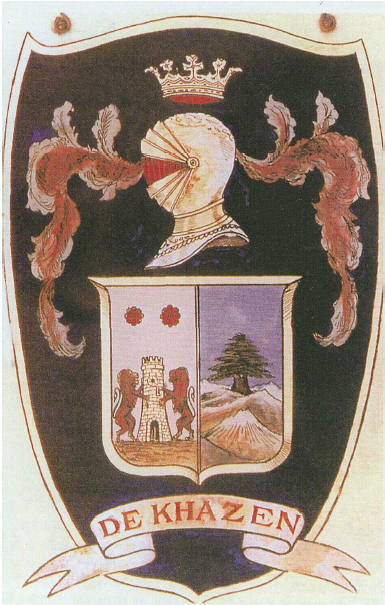
We cannot talk about the Druzes without mentioning the Jumblatt family, the same goes for the Maronites and the Khazen family. In fact, the Maronite population in Lebanon was concentrated mostly in the northern mountains of Jebbet-Becharre. At the beginning of the XVIIth century, attracted by religious tolerance and job opportunities, the Maronites started to migrate from these mountains and south of Jbeil towards El Chouf and Keserouan. Around the end of that century, they had completely colonized Keserouan and became a part of the Maanite emirate of Djebel Druze. After their arrival, they started building churches, monasteries and convents, before priests started occupying these places and Kesrouan gradually became the heart of the Maronite community, reaching its peak in 1766 when the patriarchate was installed there.
During the Ottoman era, the history of the Maronites church is divided into two parts: the traditional phase before 1736 and the reform phase after that date.
Traditional Phase
During the traditional phase, the Patriarch and his bishops lived together in a monastery of the XVth century in Qannoubine, in the holy valley of Kadisha. The latter was the official seat of the Patriarch as in three other monasteries of Jebbet-Becharre. The patriarch and his bishops were often brothers, cousins and the relationship between them was more of a brotherly one than formal. The Patriarch’s supremacy was recognized by the clergy and communities, but his functions and powers were not well defined. The bishops were not named in specific dioceses but were sent by the Patriarch when they are needed, especially when it was time to collect money. A consensus between the community and prelates was established for electing the patriarch, but the common practice before the XVIth century was to pass the seat from one family member to another. No law was defined for the election of the bishops but it was usually the Patriarch with the bishops and the influential members of the community that chose them.
The Khazens, Mouqati'ji of Kesrouan – meaning who governed a region with feudal lords who had a great autonomy in their relations with the Lebanese emir – who controlled almost the whole region, became more and more influential, and the Church, getting low on resources, was counting on this family’s generosity in exchange of giving the Khazens the right to have a say in appointing the bishops of the three dioceses (bishops of Baalbek, Damas and Alep) , and assisting the church with the nominations of other bishops as well. Also, as they were well wealthy enough to build convents and monasteries, they reserved the right to control the access to offices, and transferred religious positions to their parents by hereditary right. Due to that, three Patriarchs emanated from this family: Youssef Dargham (1733-1742), Toubia (1756-1766) and Youssef Ragi (1845-1854) as well as seven bishops.
The reform movement
Two factors, one external and another internal, contributed to the organization of the Maronite Church:
The first factor was a continuous effort from, the Vatican for this oriental Church to be conforming to Catholicism, better organized and especially giving its priests a better education. The Roman reform movement started in 1580 with the first patron council by a messenger from Pope Gregory XIII which was followed by the foundation of the Maronites College in Rome in 1582. They were already twenty in 1584. This college was headed by Jesuits for two centuries, until 1773 when their order was eliminated. The students of this establishment were responsible for the expansion of the Oriental knowledge in Europe and vice-versa.
The second element, internal this time, was the expansion of the community and its migration across the Lebanese mountain, which resulted in becoming very distant from the patriarchate as multiple trips were needed to get there. It became necessary to establish dioceses for the Maronites in the far mountains in order not to lose their faith and their identity.
The resolutions of the Lebanese council in 1736 formed both the fundamental law and the constitution of the Maronite Church, but it wasn’t until 1818 and after seven other councils that the law became effective. In fact, there were parties opposed to this law, of which the Khazens who they saw the law a threat to their powers and societal and political. In fact, the presence of bishops next to the Maronites made them social leaders as well. With the start of the XIXth century, the prelates played the political role of leaders of their community.
What followed then was the establishment of the Order of the Maronite monks in 1700 similarly to the European Catholics. This new order was organized in a rational way by a group of young monks living under collective leadership, making it the first Lebanese democratic collective: election of an executive committe for a fixed period, a rotation in positions and land exploitations. This last part was very important, because it then liberated the Maronite Clergy of the exploitation of the wakfs that was granted to the big families during the previous centuries especially the Khazen family. This left the Clergy independent of the guardianship of the lords. The feudal lords lost, one by one, their prerogatives such as naming the Patriarch and the bishop, and the elite was no longer an elite of wealthy people: in the XVIIIth century, six out of eight patriarchs were noteworthy. However, in the XIXth century only two of six were noteworthy.